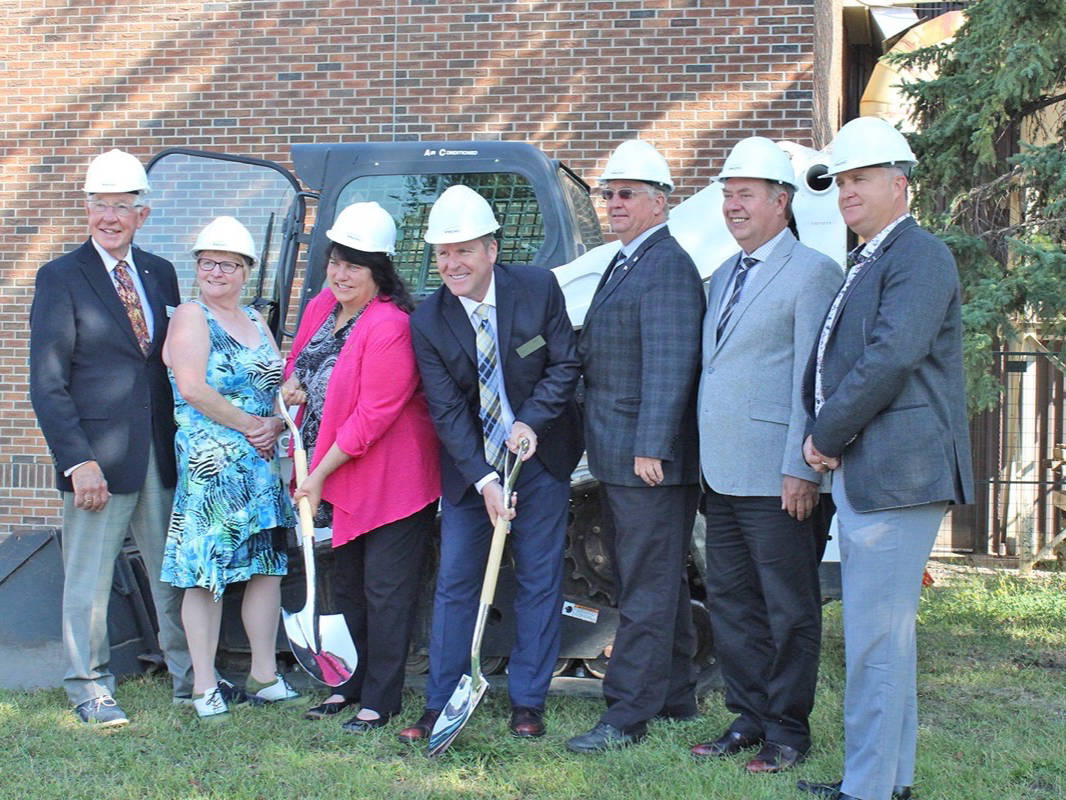Construction on a new Alternative Energy Lab for Red Deer College begins today.
The lab will be utilized for teaching, demonstration and applied research related to alternative energy opportunities.
“The Alternative Energy Lab will be an innovative learning space that will give RDC students hands-on experiences to build familiarity and confidence with alternative energy systems,” said Joel Ward, RDC president and CEO. “Over 1,000 RDC students will benefit from the lab each year, especially those in the fields of engineering technology, electrician, instrumentation technician and carpentry.”
And the lab won’t just benefit students, but business and industry in Central Alberta as well will benefit, he added.
For business and industry, he said, it gives them the chance to look at possibly taking their business and converting their current power system and asking what would it mean in terms of savings and what would the payback time be.
Ward said they will be able to do that research and provide them with information to help them make good decisions, to reduce their carbon footprint and their heat and power costs.
“It really is going to be a hub for Central Alberta for those people who are very much interested in applying some of the new environmental technologies to their business and industry, and then provide students the training and the skills to be able to install it and troubleshoot it, and be on top of this for our region,” said Ward.
The total capital cost of the lab is roughly $10 million, with 50% coming from the federal government through the sustainability initiative fund and the other 50% from Red Deer College reserves.
And Ward said they would save $1 million in heating costs.
“It’s a four year payback period for us at up to $1 million a year in savings, so when it was presented to me I thought that makes huge sense for us because after the fourth year it’s paid for itself and every year after that is $1 million we don’t have to spend on heat and power that we can spend on new initiatives for programs and for students.”
Construction on the Alternative Energy Lab will begin immediately with an anticipated completion of 2018.
“The world has changed and I think we’re all starting to realize that and how the boom and bust cycle for oil and gas is changing. We need to adapt, we need to diversify our economy and we need to align ourselves with both the federal and provincial governments alternative energy and carbon reduction strategy.”
He said when one talks about what the College is trying to become, as a polytechnic university, this is a real example of the type of institution.
“It’s about applied learning, it’s about connection with business and industry and it’s about advanced training so those new degrees in manufacturing, the degrees in alternative energy. We need to move into that world in a big way if we’re going to be successful in our future,” said Ward.
The design build team selected for the project was Clark Builders, Manasc Isaac and ATCO.
Brian Lacey, senior vice president of energy and resources with Clark Builders, said a great deal of the project you won’t see will be rooftop solar arrays, but the visionary part of the project is the learning lab.
“The learning lab is approximately 4,000 square feet and it’ll be set up such that it’s somewhat modular so you can actually tailor make the inside to your current demand,” he said.
He said it’s not a strongly prescribed space, as there’s a lot of flexibility to it.
“The display component of it is going to be really interesting because you can visualize, you can walk in and see what your current demand is doing, your demand on the grid, and you can really see the fluctuation so it’s a very interactive space that’ll be reporting on the generation of power.”
The new lab is one of three key components of RDC’s Alternative Energy Initiative, which promotes environmental stewardship through the application of sustainable and energy efficient technologies. The initiative is possible because of the Government of Canada’s Post-Secondary Strategic Investment Fund (SIF) grant, with matching investment by Red Deer College.
In addition to the new lab, the Alternative Energy Initiative includes generating alternative energy on main campus through solar panels and a combined heat and power unit, and continuing RDC’s ongoing energy conservation strategy with the conversion of all exterior lighting to LED lighting.
The three components of the RDC Alternative Energy Initiative will create and save approximately 9,340 megawatt hours per year, offsetting current campus electricity usage by an estimated 67%. This would be the equivalent of the energy required to power 1,300 average Alberta homes – or the equivalent of removing 1,100 cars off the road annually.
“The Alternative Energy Initiative and the lab that we’re celebrating today are all part of our future-focused Green Energy Master Plan,” said Ward. “Through our actions today and our planning for tomorrow, we are providing learning opportunities for students, connecting with industry and research partners and reducing RDC’s carbon footprint. Plus, we will be helping our region and our province to diversify its economy by developing new industries and technologies that explore alternative energy options.”



